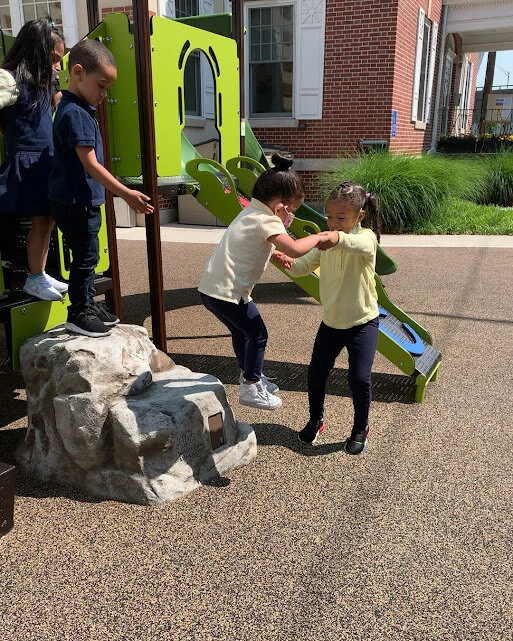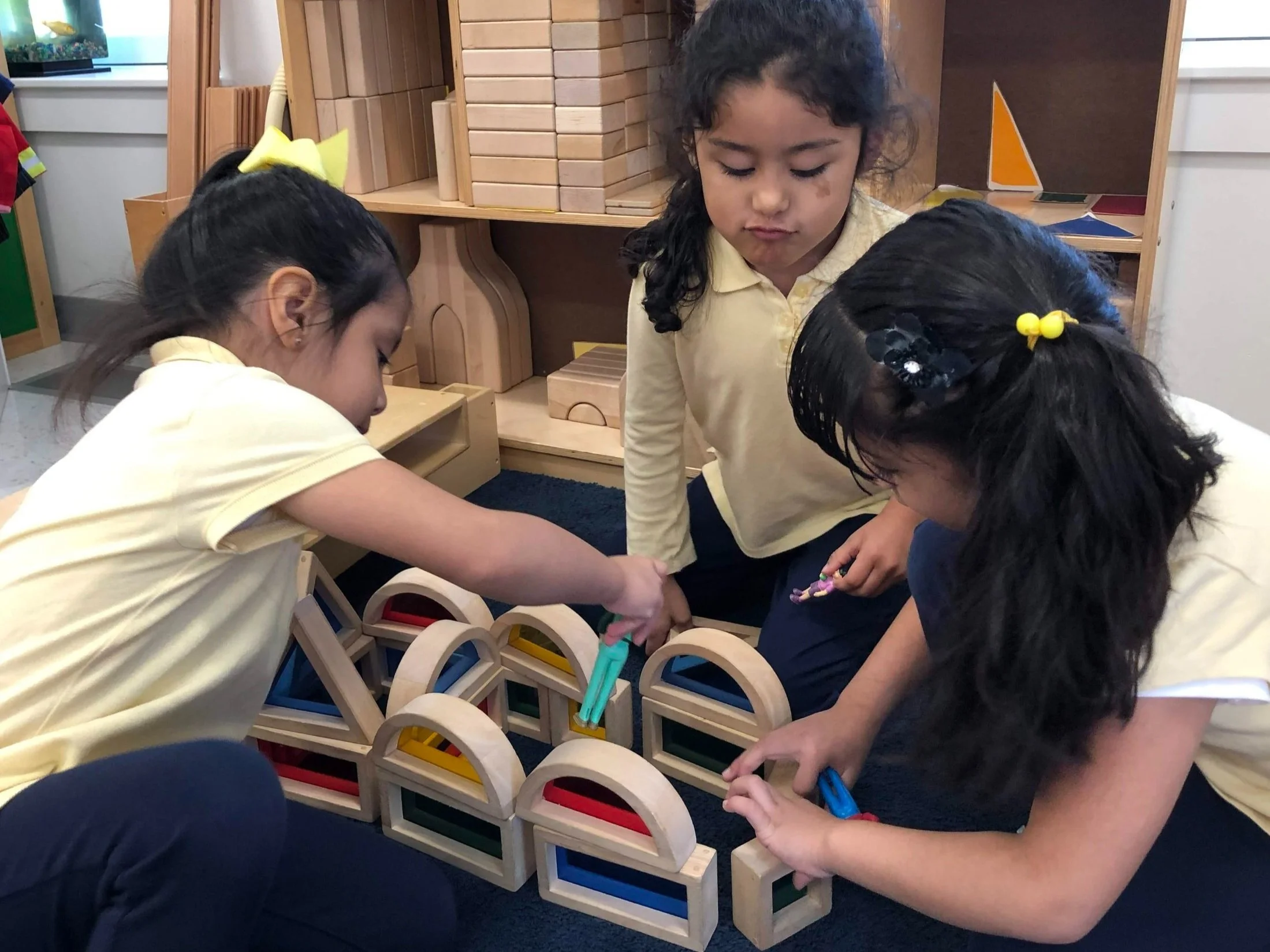The Serious Business of Play
“Play is often talked about as if it were a relief from serious learning. But for children play is serious learning. Play is really the work of childhood.”
~ Fred Rogers
It’s Play Time!
Oftentimes, adults disregard a child’s play. To them, it may just seem like a hobby that children have or a way to pass the time. In reality, play is crucial to a child’s development. Play allows children to use their creativity while developing their imagination, dexterity, and physical, cognitive, and emotional strength. There are many benefits of play such as the development of critical skills that they will need throughout their lives. Play helps with intellectual, social, emotional, and physical development. Understanding how the different types of play are crucial to a child’s development will help you better understand the different stages of play that a child goes through.
Intellectual development: Play builds executive function skills, content knowledge, and creative thinking. When children build with blocks or draw, they are counting, classifying, and creating and examining patterns. When children engage in dramatic play, they are practicing telling stories in a sensible order, using rich vocabulary, and writing. Construction play has been shown to build problem-solving and mathematical skills.
Social development: Playing with others helps children learn socialization. They learn about others, how to listen, and depending on what stage they are in their development, they will even learn how to view things from another person’s perspective. Play can help with children’s development of empathy. Social play also requires children to share ideas and express feelings while negotiating and reaching compromises which teach problem-solving skills.
Emotional development: Messy play is important for a child's social and emotional skills as it helps them develop self-control and emotional regulation. Engaging with different materials like dirt, sand, and slime (just to name a few), give your child a chance to strengthen their sensory processing skills, along with their emotions.
Physical development: Many children choose to play through their bodies. Examples of physical play would be running, jumping, swimming, playing outdoor games like duck-duck-goose, and tag. The number of outdoor games is endless, but physical play helps children develop their gross motors skills, and encourages children to be active which can promote physical well-being.
The Six Stages of Play :
As children develop and grow, so does their way of playing. Mildred Parten (an American sociologist) did some great work researching and observing children at play. She was the pioneer of the theory that children develop their social play in stages. Parten describes six stages of social play that start from birth. It is important to note that these stages happen at different rates for each child, and should serve as a general guideline when thinking about an individual child’s development.
Here we will take a look at how social play develops and changes over time for children.
Unoccupied Play (Birth-3 Months)
At this stage, a baby is making a lot of movements with their arms, legs, hands, feet, etc. They are learning about and discovering how their body moves. Examples of unoccupied play include:
A child picking up, shaking, then discarding objects around them. They are learning through their senses!
A child touching and giggling at lights, toys, sounds, etc.
Solitary Play (Birth-2 Years)
This is the stage when a child plays alone. They are not interested in playing with others quite yet.
Examples of solitary play include:
Two children playing with their toys next to each other but never looking at or showing any interest in each other.
A child exploring their surroundings, developing their senses, and learning about the toys they are playing with. At this stage, they are often exploring how materials work… what happens when I stack these blocks? how do these pieces fit together? what happens when I add water to this sand?
Spectator/Onlooker Behavior (2 Years)
During this stage, a child begins to watch other children playing but does not play with them.
Examples of spectator/onlooker play include :
Younger children in a multi-age setting with older children will observe older children at play, but not get involved in the ‘big kid games’.
Parallel Play (2+ Years)
When a child plays alongside or near others but does not play with them this stage is referred to as parallel play.
Examples of parallel play include:
A brother and sister playing with the same Lego set, but constructing different buildings.
Children sharing brushes and paints, but paint on different canvases.
Children sitting parallel from each other while playing with blocks but constructing two different towers.
Associate Play (3-4 Years)
Here a child starts to interact with others during play, but there is not a large amount of interaction at this stage. It is very similar to Parallel Play, in that two children (or a small group of children) may be playing in the same area of the classroom, using different materials, and making small talk with each other. Children might all be playing on the same piece of playground equipment and excitedly want to show their friends what they can do as they are all jumping, running, and playing together.
Examples of associate play include:
Children asking one another questions about their play, what they’re doing, and how they’re doing it, but the children are working on different tasks.
Children negotiating with each other to share toys and materials.
Cooperative Play (4+ Years)
When a child plays together with others and has an interest in both the activity and other children involved in playing they are participating in cooperative play.
Imaginative play, where children take on the roles of their favorite movie characters to act out a scene or create their own new scene. The House Area is often filled with children engaging in Cooperative Play!
Board games where children need to take turns in order for the game to proceed according to shared and agreed-upon rules.
Organized sports.
As we can see, play is powerful and vital for the development of children. Play should be fun, spontaneous, and flexible to allow the child to have a healthy development. Here at CDP, we pride ourselves in our play-based curriculum, and in providing students with activities that promote their development.







